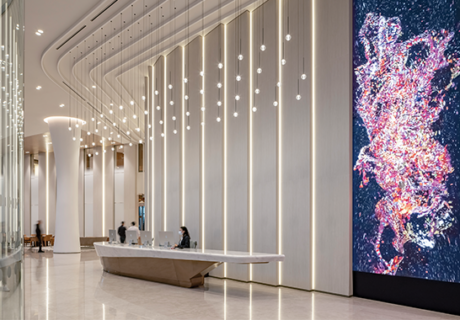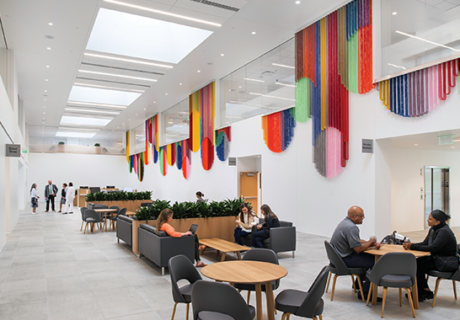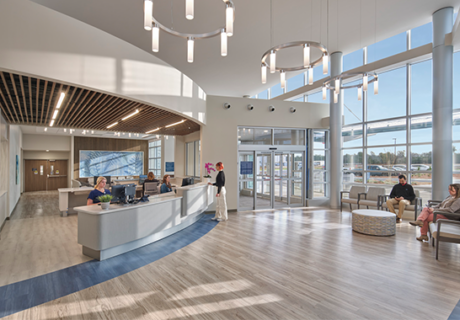Drawing A Connection At Zaans Medical Center
Wayfinding programs aim to minimize the stress associated with reaching a destination within a healthcare facility by providing signage, graphics, and intuitive design to help direct patients, visitors, and staff. At Zaans Medical Center, in Zaandam, The Netherlands, the wayfinding approach for the new 415,000-square-foot medical center also provided a chance to create a strong sense of place by introducing something a little different: black and white line art.
“We wanted to use a specific style that was not common in hospitals, something unexpected, yet aesthetically pleasing,” says Rene Toneman, creative director and partner at Silo (Amsterdam, The Netherlands), which contributed the signage and graphics program for the project. “Using the line art, we approached recognizability more subtly, encouraging a more personal interpretation.”
The wayfinding program comprises a range of signs, overviews, and graphic elements, with illustrations and visuals hand-drawn by in-house designers at Silo and incorporating elements that reflect the area’s rich industrial heritage. The biggest statement comes in the form of a 328-foot-by-15-foot mural in the central hall, depicting a reclining human figure. While the different elements of the body refer to health and medicine, upon closer look, onlookers will notice parts of the body tell a visual story of the region.
For example, the hair refers to the whaling industry, while the legs incorporate recognizable images of the landscape and agricultural silos. “The recognition of elements makes people feel connected,” he says. “And that is something that can help reduce the stress involved in going to see a doctor or visiting someone at the hospital.”
While the intention was for the large graphic to look hand-drawn, the size of the graphic along with the facility’s maintenance and infection control requirements made it impossible to be delivered that way, he adds. Instead, a digital design of the image was printed on vinyl-coated polyester wallpaper in four-meter wide strips and then installed over a two-week period.
“The seamless application gives the illusion that it is one surface, and that the illustration is part of the wall, rather than added later,” he says. “That’s exactly what we aimed for.”
Another aspect of the program is signage to demark specific outpatient clinics. Rather than use the often technical outpatient clinic names, designers opted for a numeral system, which is shorter and easier to remember. Additionally, for children and visitors with low literacy, a set of animal icons, including a rabbit, woodpecker, and squirrel, was placed on walls and columns near floor level. The playful animal illustrations not only empower young patients to lead the way to their appointment but also distract them from their upcoming doctor’s appointment.
Completed in January 2017, the building was designed by Mecanoo (Delft, The Netherlands). And Toneman says the ability to address the entire scope, from spatial identity to wayfinding and signage, delivers a cohesive look and feel that’s optimally integrated with the architecture.
“We’ve been able to enhance the entire spatial environment and user experience,” he says. “The key to the project’s success was to tell a story to which all users of the building—patients, staff, and visitors—could feel connected.
Project details:
Facility name: Zaans Medical Center
Location: Zaandam, The Netherlands
Project completion date: January 2017
Owner: Zaans Medical Center/Vitaal ZorgVast
Total building area: 415,000 sq. ft.
Architecture firm: Mecanoo
Interior design: Mecanoo
General contractor: BAM
Engineering: BAM Advies & Engineering (structural engineer), Ingenieursbureau Linssen (mechanical engineer)
Builder: BAM
Signage/graphics: Silo Agency











